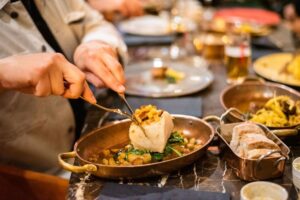Last Updated on November 26, 2025 by Emma Fajcz | Published: May 13, 2024
Portugal is a bread-loving country—and we mean that in the best possible way. Portuguese bread is part of pretty much every traditional meal in one way or another, whether toasted and buttered for breakfast, dipped into a hearty soup at lunch, or brought to the table before dinner.
Some destinations are famous for baguettes or bagels, but Portugal has a more diverse array of specialties. One of the best parts of discovering its cuisine is getting to know all of its endless varieties of bread, many of which represent specific regions or highlight unique ingredients.
To show you what we’re talking about—and prepare you to order at any bakery in Lisbon—here are a few of the most fascinating and flavorful types of Portuguese bread.
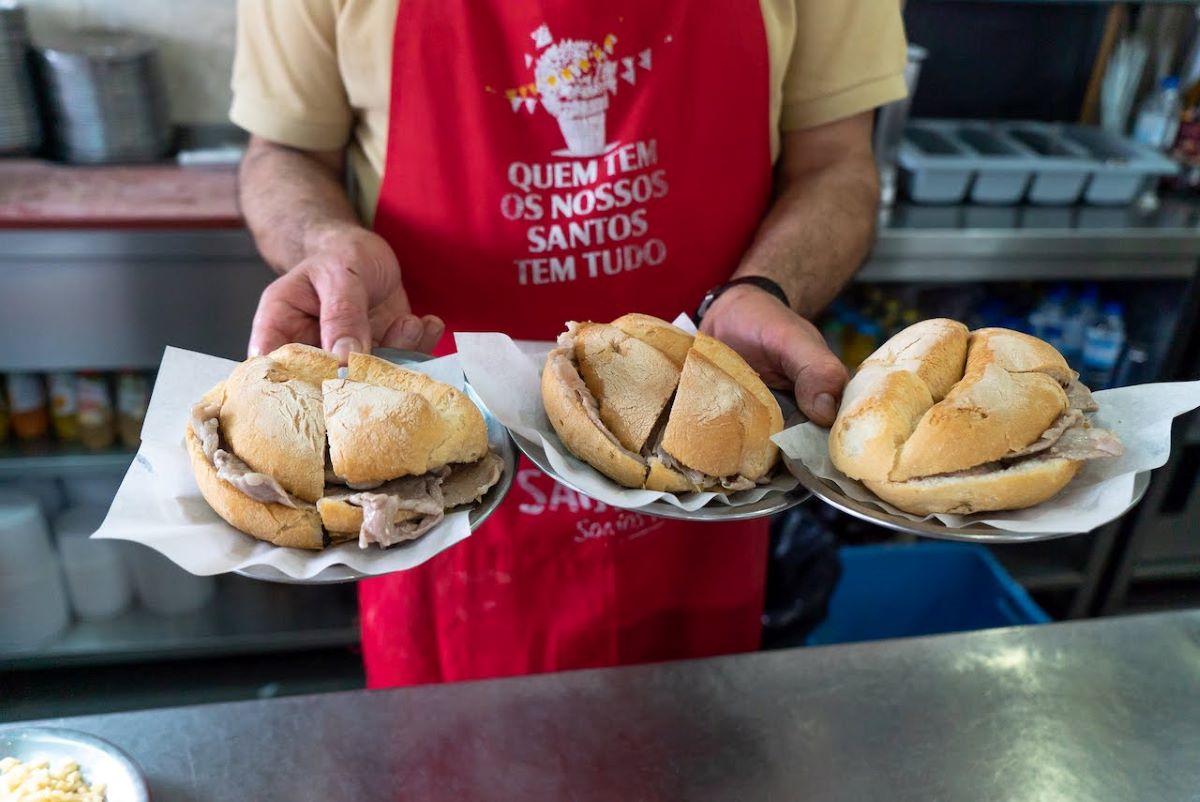
What's Included
Pão Alentejano
Portugal’s Alentejo region is renowned for its wine, olives, and, of course, bread. This largely rural region is quite literally the country’s breadbasket, so it only makes sense that it has its own iconic style of pão.
Literally meaning “bread from Alentejo,” pão alentejano is a simple combination of pure wheat flour, yeast, water, and salt. The secret is in the quality of the ingredients and the traditional method of baking it in a wood-fired oven.
Local tip: If you’re looking for authentic pão alentejano, keep an eye out for its traditional shape: a large loaf with a smaller mound of dough on top.
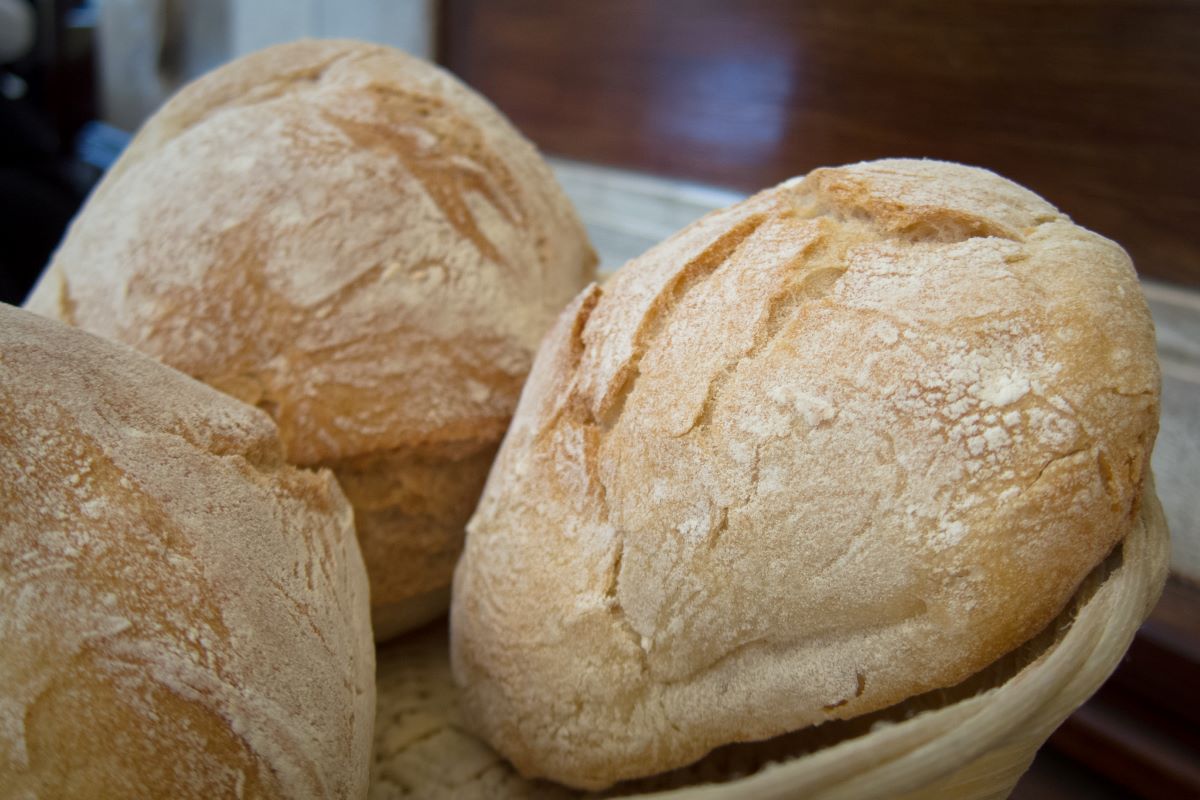
Broa de Milho
The word broa has multiple meanings in Portuguese; food-wise, it can refer to either a small cookie or a style of bread. When it comes to bread, we’re usually talking about broa de milho, which is made with cornmeal—either instead of or in addition to wheat.
The result is kind of like a cross between cornbread and a really good loaf of wheat bread or sourdough. It’s moist and crumbly, sometimes slightly sweet, and a key ingredient in many classic Portuguese dishes like bacalhau com broa and migas.
Local tip: You can find decent broa at supermarkets in Lisbon, but for a truly transcendent experience try the broa de milho from Gleba.
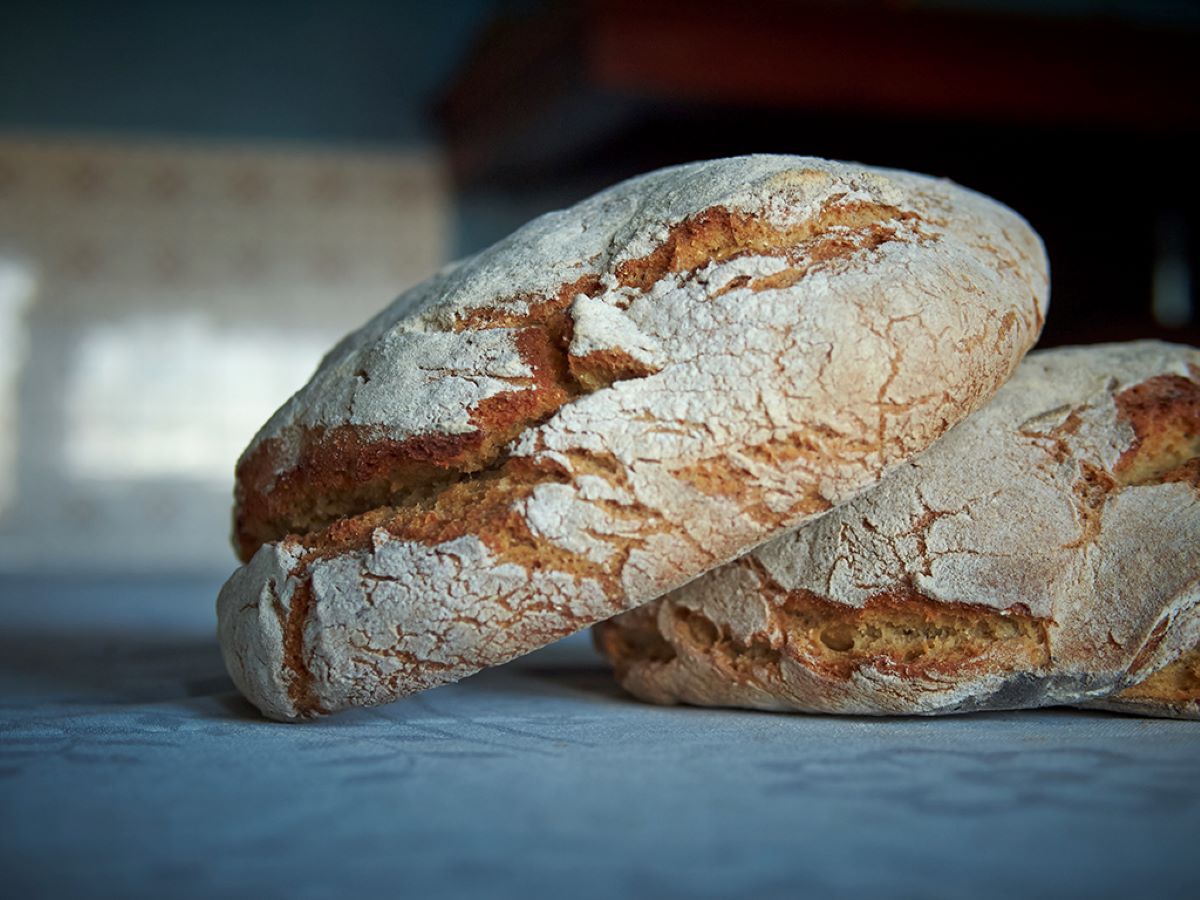
Pão de Alfarroba
You may or may not be familiar with alfarroba (carob), which has a similar taste and appearance to cacao. But if you’ve been to Portugal, you’ve almost certainly encountered it somewhere; it’s relatively common here, especially as an addition to bread.
Pão de alfarroba, or carob bread, is made with wheat (and sometimes rye) flour, plus just enough carob to turn it a lovely shade of dark brown. Its slightly nutty flavor can elevate a simple sandwich or slice of toast to a whole new level.
Local tip: Many Portuguese cafés sell sandwiches made with small round rolls of pão de alfarroba. If you spot them, try one!
Bolo do Caco
Madeira, like many islands, has developed its own culinary culture through its centuries of isolation from mainland Portugal. One of the key elements of Madeiran cuisine is bolo do caco, a flat, round bread roll that has a secret ingredient: sweet potato.
On the island, bolo do caco is often toasted on a griddle and slathered with fresh garlic and herb butter. But this versatile bread is also the perfect size for burgers and sandwiches—which many restaurants capitalize on to add a unique touch of Madeiran culture to otherwise familiar treats.
Local tip: You might see the option on a menu to swap out the regular bread or bun for bolo do caco; this is pretty much always a good idea.
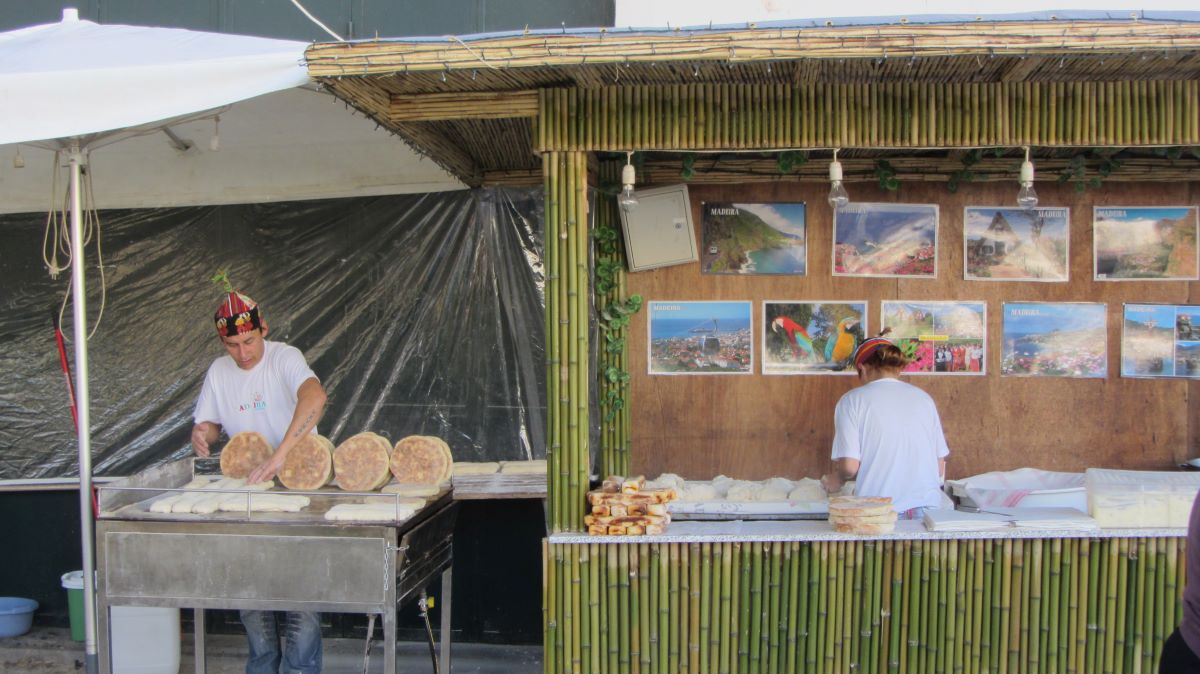
Bolo Lêvedo
Not to be confused with Madeira, the Azores (or Açores in Portuguese) also have their own iconic bread. The bolo lêvedo has its origins on the largest of these nine islands, São Miguel, in the village of Furnas (which is also famous for its cozido).
It kind of looks like an English muffin: round, flattened, and lightly browned on both sides. Because the recipe includes sugar, milk, and eggs, bolos lêvedos have a slightly sweeter and richer flavor than your average bread.
Local tip: In Furnas it’s especially common to have a bolo lêvedo for breakfast, but you can enjoy one as part of any meal—even dessert.
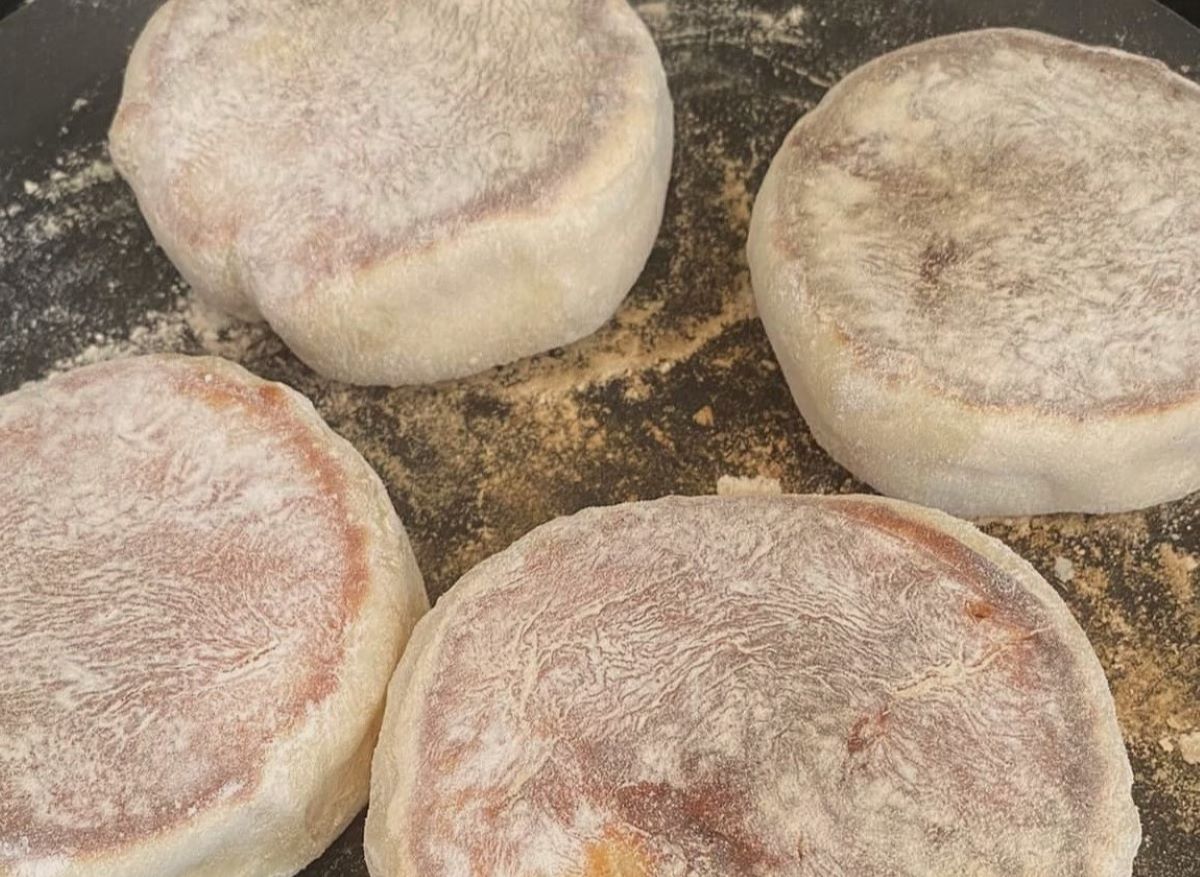
Pão de Água
If you speak even a little bit of Portuguese, you know that pão de água literally means “water bread”—which may not sound too exciting. But although it’s among the simplest types of Portuguese bread, it’s well worth trying.
Portuguese pão de água is light, fluffy, and perfect for pairing with pretty much anything. It often comes in the form of small round rolls, but you can also find it in loaves to slice and use for toast or sandwiches.
Local tip: Beyond the classic pão de água, you might find creative versions that incorporate olives or different types of flour.
Pão de Mafra
Mafra is a city just north of Lisbon and inland from Ericeira, known mainly for its ornate National Palace—and its bread. Pão de Mafra is a common sight throughout the region and the capital, whether in the form of large loaves or bite-sized rolls.
Although its ingredients are basic, pão de Mafra stands out for its soft texture and distinctive flavor. The traditional recipe involves a specific fermentation process and—ideally—the use of stone-ground flour.
Local tip: The traditional shape of pão de Mafra is an elongated loaf with a slightly larger segment at one end; look for this if you want to try the real deal.
Papo-Seco
Also known as a carcaça (among other nicknames), the papo-seco may be the most iconic yet unassuming variety of Portuguese bread. Like some of the other breads on this list, there’s nothing special about the ingredients: flour, water, salt, yeast, and sometimes oil or butter.
So what makes papos-secos unique? They have a super light texture and delicate crust, and come in the form of oblong rolls with a split down the middle. They’re the kind of humble, nostalgic bread that many Portuguese people grew up eating every day.
Local tip: A papo-seco is the bun of choice for a bifana, as its soft interior soaks up all the delicious flavor from the marinated pork.
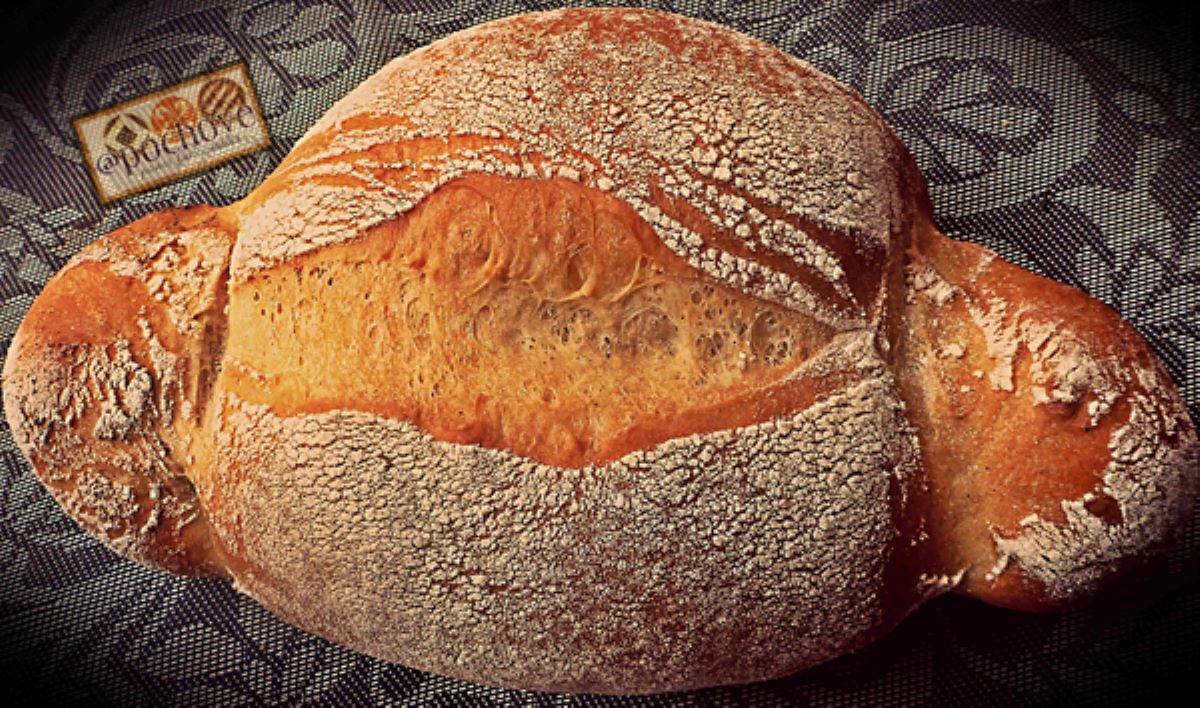
Is your mouth watering yet? Well, if you’re looking to dig deeper into Portuguese cuisine, make sure to check out our Lisbon food tours. From Food & Wine tours to Fado tours, our local tour guides will lead you to the best places to eat and drink in Lisbon!

